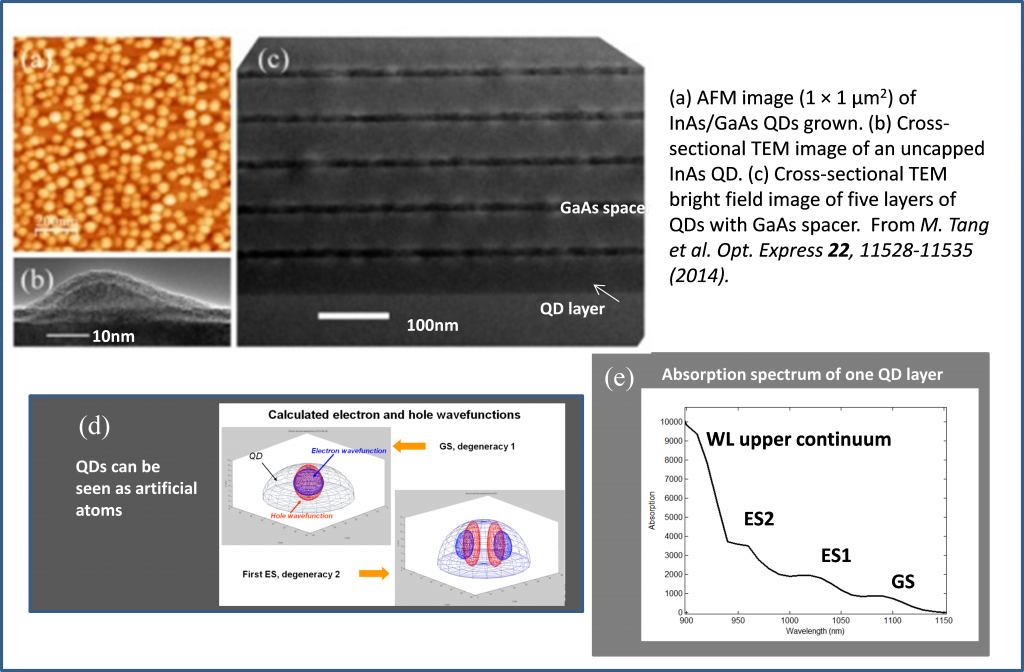Quantum Dots (QDs) are semiconductor crystals of a few nanometers that provide confinement of electrons and holes in the three spatial dimensions. They can be seen as “artificial atoms” because, due to spatial confinement, charge carriers can occupy only a discrete set of energy levels, just like electrons in an atom. III-V QDs can be grown by epitaxial techniques such as Molecular Beam Epitaxy (MBE) and Metal Organic Chemical Vapor Deposition (MOCVD). In such quantum-confined structures, both optical and electronic properties, such as absorption wavelength and carrier dynamics, can be widely tuned by playing e.g. on size and shape. In TFQD we will exploit self-assembled InAs/GaAs QDs grown by MBE in Stranski–Krastanov method. Different optimization strategies such as selective doping [1] and maximization of number and density of QD layers will be pursued thanks to the unique expertise and MBE facilities at UCL and TUT.
Images of InAs/GaAs QDs grown at UCL by self-assembling. The QDs are InAs islands with about 20 nm diameter and height of 5-6 nm. (d) QDs act as artificial atoms providing 0D confinement of electrons and holes. (e) Due to the self-assembling growth process, QDs are inhomogeneous in size and composition, they also sit on a thin Wetting Layer (WL) film. Several QD layers can be stacked and together with the WL upper continuum, they can provide a wide absorption spectrum above 900 nm.[1] P. Lam, S. Hatch, J. Wu, M. Tang, V. G. Dorogan, Y. I. Mazur, G. J. Salamo, I. Ramiro, A. Seeds, and H. Liu, “Voltage recovery in charged inas/gaas quantum dot solar cells,” Nano Energy, vol. 6, pp. 159 – 166, 2014.

